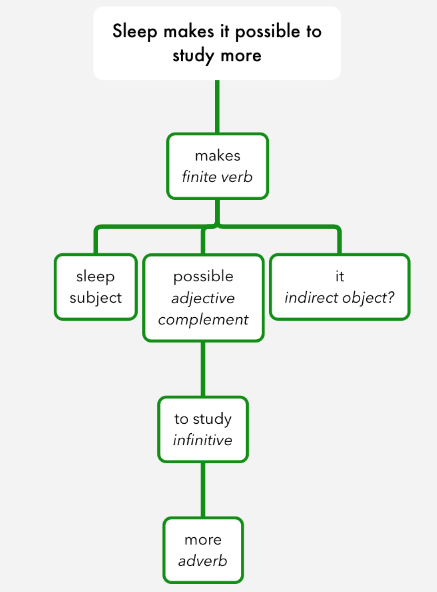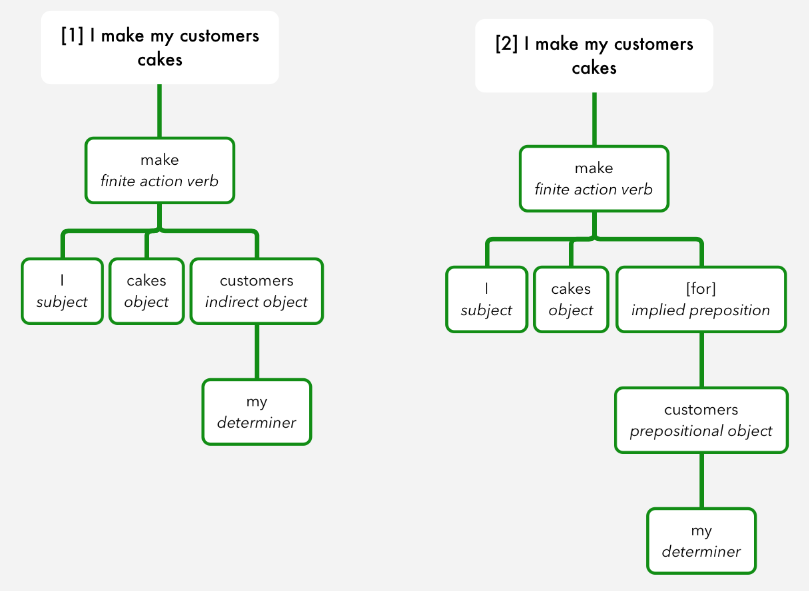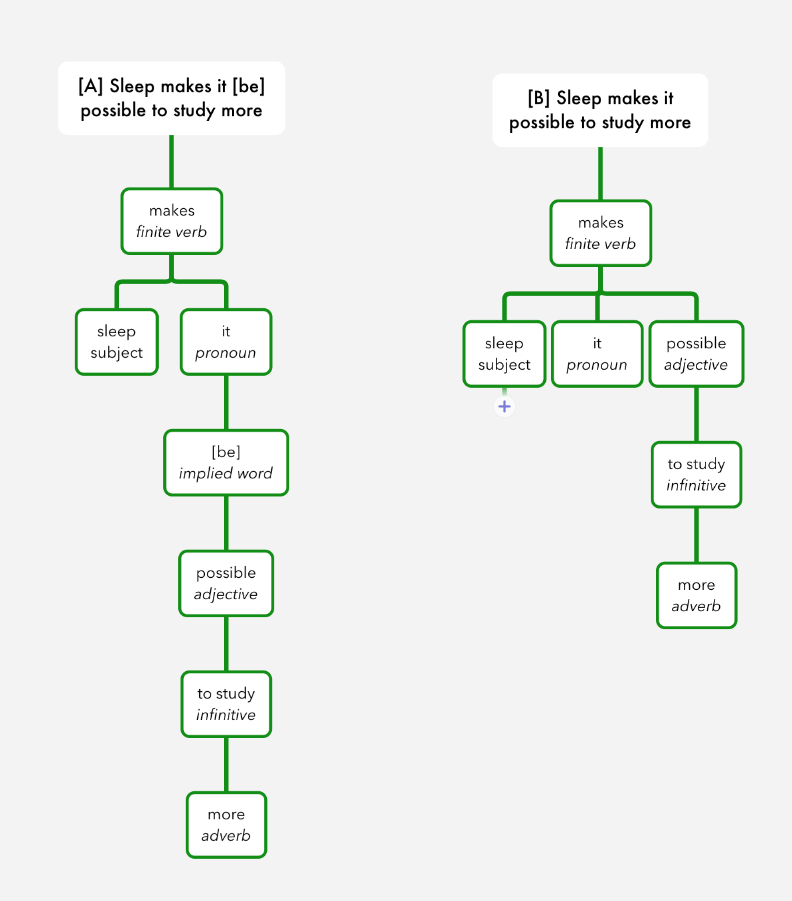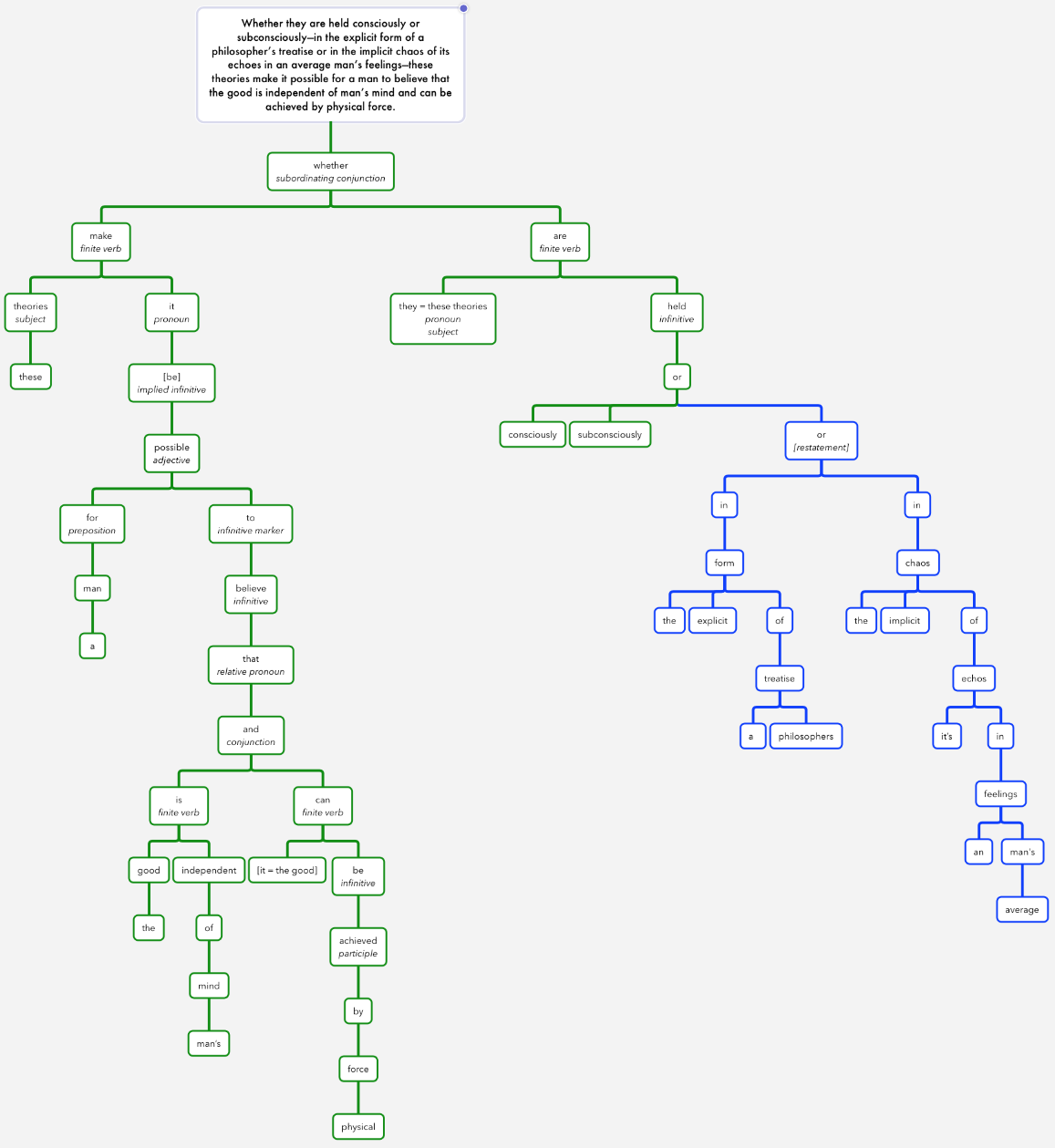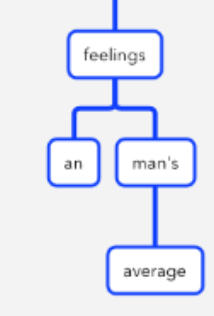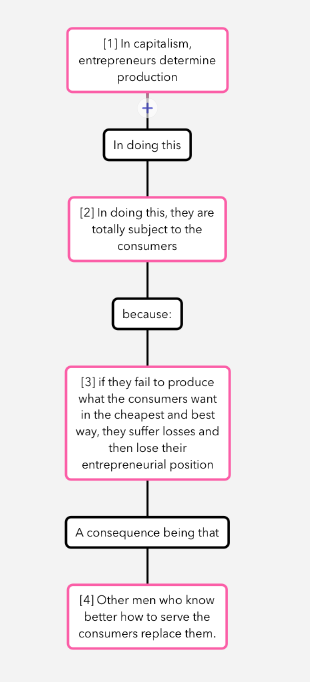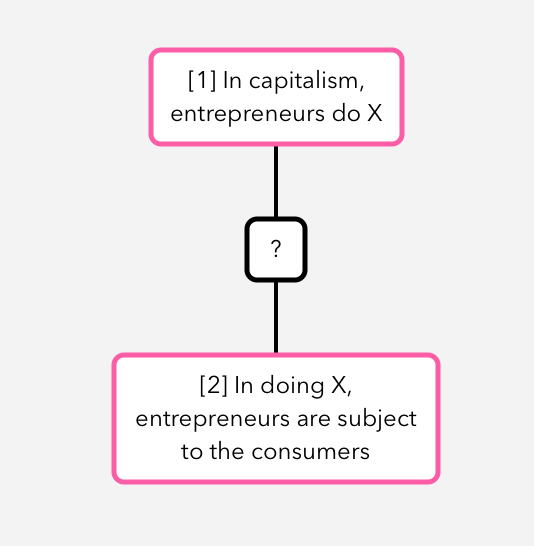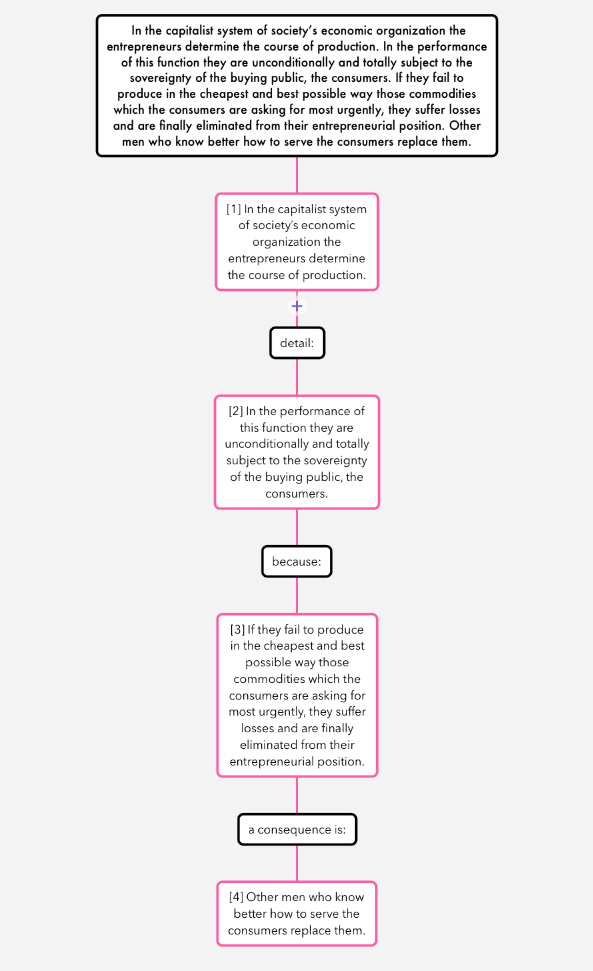Yeah I did and I do often use a dictionary. It’s not something I hesitate to use.
It’s an action verb. So it can’t have a complement. It requires a subject, and can have an object, indirect-object, and modifiers.
Complements are for linking verbs, not action verbs. Indirect objects are for action verbs, not linking verbs. So can a verb have both an indirect object and a complement? Okay, so no, I don’t think so.
Yeah I did. The few things I found were hard to translate to my problem. I think that’s maybe due to the difference between the analysis styles? I was also maybe looking for something simple and quick. I didn’t have much time and wanted to post about something grammar related before I left the house. I’m thinking I should’ve just waited and put more time into the post now though. I feel bad when you ask me if I’ve tried x, y, z and I have but I didn’t mention it initially. I should be trying to communicate more about what I have already tried and what I think’s not working right?
Okay one example you use in your grammar article is, “I threw her the ball” In that ‘her’ is the indirect object. The more explicit version uses an adverbial prepositional phrase, and makes the indirect object the prepositional object. So ‘John threw the ball to her’.
So the indirect object receives the object of the action verb. Okay so I had some conceptual confusion about indirect objects. So for there to be an indirect object, there needs to be an object that that indirect object receives.
In “I make my customers cakes”, ‘customers’ are the indirect object, and ‘cakes’ are the object. The explicit version is “I make cakes for my customers”, where ‘customers’ is the prepositional object of ‘for’ and the prepositional phrase ‘for my customers’ is an adverbial prepositional phrase modifying ‘make’.
Diagramming that looks like this or this, with or without the implied preposition:
So, comparing to my tree for “Sleep makes it possible to study more”:
If ‘it’ is the indirect object, what is the object that it is receiving? My tree doesn’t have an object. So it doesn’t make sense for ‘it’ to be an indirect object. It also shouldn’t have a complement, because it’s an action verb, but that ‘complement’ isn’t the object I’m missing.
Hmm. So I’m sure that ‘sleep’ is the subject, and ‘makes’ is the finite verb.
‘it’ makes sense as an object, because it’s a pronoun.
A comment in the reddit post you linked above seems relevant:
With “It makes it possible for us to expand our business,” possible is modifying the it in bold, which serves as a dummy pronoun referring to “to expand our business” (it’s extraposition, in the same way “to expand our business is possible” would be rephrased to “it is possible to expand our business” to make the sentence easier to process). And finally, “for us” serves to specify the subject of the infinitive clause.
So ‘it’ is a dummy pronoun referring to “to study more”, and “possible” is modifying the ‘it’, and so also ‘to study’ by proxy. That would all make sense, except, that it seems unusual for the adjective to come after the pronoun ‘it’, but I suppose since it’s modifying ‘to study’ by proxy, that makes sense. Am I right that’s its unusual for an adjective to be to the right of its noun?
Okay, I think it wasn’t obvious to me what possible was modifying, and that’s part of the trouble I’ve had.
I guess what I’m not sure about now is what ‘to study’ is a child of in the tree, ‘it’ or ‘makes’. I’ll post this for now though.
